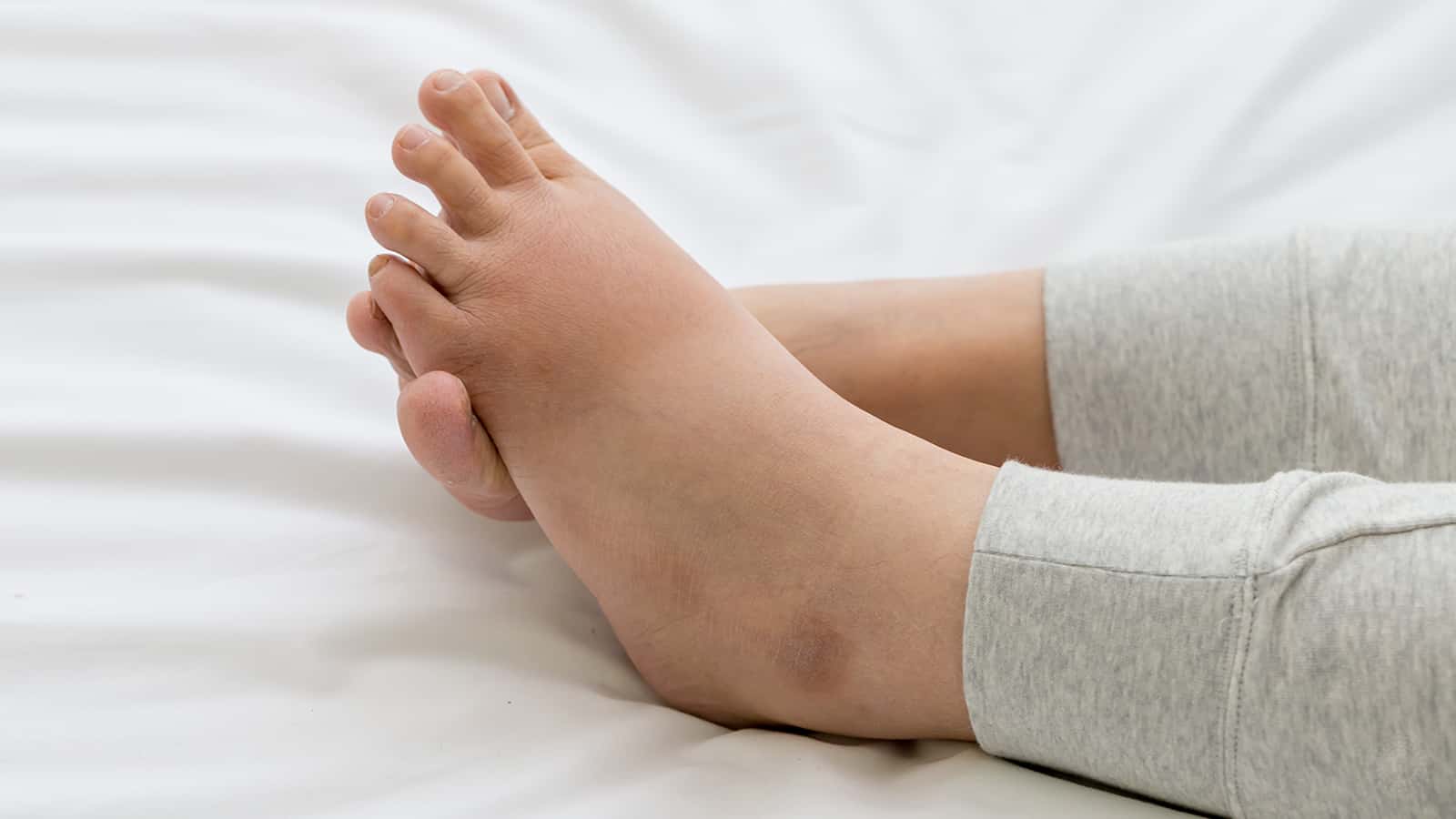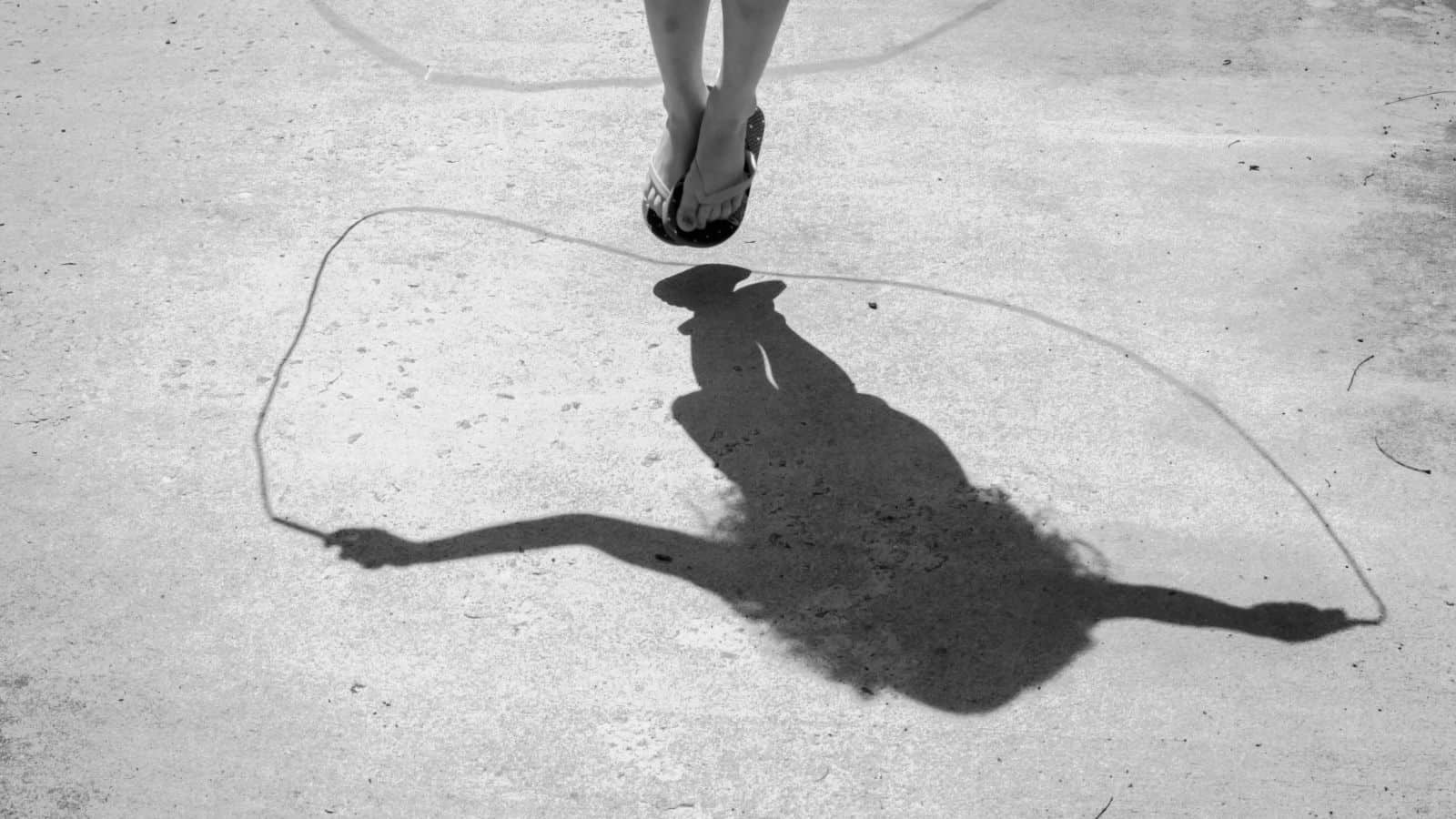Do you long to wear cute heels but don’t want to bring attention to your cankles? It’s a creative word that describes the frustration of enlarged ankles that seem to blend in with your calves. Why must you suffer from this unsightly problem?
Four of the Most Common Causes of Cankles
Many things can cause your ankles to be larger than average. Additionally, you must consider your bone structure too. Losing weight and burning fat when you have larger bone mass won’t help matters, but here are a few other reasons why this area could be too big.
1. Being Overweight
When you consume more calories than you burn, your body stores the excess as fat cells. Usually, men will hold the extra weight in their gut while women notice it more in their hips, thighs, legs. Gravity has no mercy on your body and will often draw excess leg fat into your calves and ankles. However, many men can develop pudgy ankles just as well as women.
2. Water Retention
One of the dreaded symptoms of your monthly period is water retention, also called edema. You probably notice it more in your outer extremities, your hands, and feet. The temporary water retention around your ankles can make it difficult to wear your favorite shoes.
Pregnancy can also cause poor circulation in your legs that often results in calf and ankle edema. If you have a poor diet high in sodium, it can make you retain extra water to bloat your whole body. If these are the reasons for your cankles, talk to your primary healthcare provider about a proper diet and exercise regimen.
3. Prescription drugs
Do your ankles seem puffy all the time? It could be a side effect of a prescription drug you are taking. Hormone replacement therapy and many birth control pills are notorious for causing bloated calves and ankles. If you are on medications for hypertension or depression, you can also develop swollen ankles.
4. Heredity
While you can’t blame every problem or flaw, you have on your parents, having cankles may be a fair reason to point a finger or partially blame them. Do either your mother or father have large ankles? It’s possible that you inherited the same trait from them.
Cankle Reduction Exercises
Are you ready to bring back the definition to your calves and find your disappearing ankles? The right exercises can help you get the desired results. Try these six exercises to tone your calves and minimize your cankle problem:
1. Jumping Rope
Remember the fun you had as a school kid jumping rope on the playground? It gave you a valuable exercise skill that can tone your calves and slim your ankles. Your speed will be faster, and you may not be skipping to the beat of a childhood rhyme, but jumping rope as an adult can still be fun.
• Equipment Needed:
All you need is a sturdy jump rope that’s height appropriate, with handles that feel comfortable in your hands. They aren’t expensive, and you can find them in most department or sporting goods stores. Give yourself enough space inside or outside to jump safely.
• How to Do It:
You already remember the basics of jumping rope from elementary school. As you jump, the string will move under your feet while you land on the balls of your feet, not your heels. Try to keep your elbows close to your sides and jump at a rhythm that matches your breathing.
For optimal results, jump rope steadily for one minute to complete one set, and then you should rest for 30-60 seconds. Repeat these steps until you’ve completed at least five sets. As you progress, you can jump faster or do more sets.
2. Calf Raises with Weights
Many leg exercises concentrate on your thighs and hips. However, this weighted exercise focuses on your calf muscles. It may also strengthen your knees and ankles.
• Equipment Needed:
You can start with two dumbbells, kettlebells, or homemade sandbags that feel comfortable to you. When you get used to this exercise, you can increase the weights.
• How to Do It:
For the first position, stand naturally on your exercise mat with your feet aligned with each shoulder. Your arms should be relaxed with your weights at your sides.
Raise on your tiptoes with the weight shifting to the balls of your feet. Try not to move your arms or the weights. Hold this position for 1-2 breaths.
Now, lower your feet back to the starting position, keeping your knees slightly bent and not locked. Your goal for this exercise is to do at least three sets of 15 reps. Feel free to increase the weights as needed.
3. Calf Lifts
Do you want more definition in your calves and less in your ankles? These sitting lifts isolate your calf muscles and tone them with weight training. You can even do these when you are on a break in the office.
• Equipment Needed:
Use a chair that is sturdy yet comfortable.
• How to Do It:
Sit upright with a barbell or similar weight right above each knee as this is the starting position.
Push your toes and the balls of your feet into your exercise mat and raise your heels off the ground, which will lift the weight. Hold this position for 1-2 breaths.
Lower your heels and the weight back to the starting position. You should feel resistance in your calf muscles as you build strength. Do four sets of 15-20 reps.
4. Calf Stair Lifts
Here is another simple exercise that can improve your strength and flexibility while minimizing those frustrating cankles. You may notice an added benefit in your glute muscles. It’s a beneficial exercise to add when you are working out.
• Equipment Needed:
Use a foam or wooden exercise stair that’s at least five inches thick. Don’t stack anything together because they could shift when you move and cause you to fall.
• How to Do It:
Place your stair on your exercise mat and stand on its edge with the balls of your feet. Concentrate your weight around each foot. This is the first position.
For the second position, bring your heels up to stand on your tiptoes, and hold the position for 1-3 breaths.
Now, lower your heels back into the first position, noticing the stretching and tightness in your calves and lower legs. Try to keep your knees slightly bent without locking them, so each motion is smooth and controlled.
Try to do three sets of these for 15-20 reps, resting in between if needed. If you want to add some additional resistance, hold a weight in each hand and keep your arms at your side.
5. Calf Lunges
You are probably familiar with doing classic lunges in other exercise regimens. This one targets your calves, shins, and hips while reducing your cankles. If you are a beginner, do these calf lunges without weights. You can eventually add weights as you feel comfortable working out.
• Equipment Needed:
Use a kettle ball, weights, or detergent bottles filled with sand.
• How to Do It:
Begin by standing naturally and hold the weight in front of your chest.
With your right foot, take a big step forward and move into a lunge position. Both your legs should be bent at 90-degree angles.
Now, raise your forward right heel until the foot is on tiptoes. Hold this position for at least 2-3 breaths while keeping your right knee straight.
Lower your right heel back to the ground into the first position. Your core should be tight, and your movement should be fluid and controlled. At first, it’s a little tricky to keep your balance, but it will come with practice.
Try to do at least three sets of 8-10 reps. Then, switch and do the same steps with your left leg.
6. Plie Bounces
Even if you didn’t become the ballerina of your mother’s dreams, you could still benefit from those years of ballet classes. The plie is an essential ballet foot position that strengthens your leg and foot muscles and allows you to be more limber.
• Equipment Needed:
You only need your exercise mat for this workout. Form-fitting socks or ballet slippers may be easier on your feet.
• How to Do It:
For the first position, put your ankles together, so your feet point in both directions, like the letter V. Bring your heels up and down in a gentle bounce for 15-20 times.
Now, make the second position by standing with your heels aligned with each hip and your toes pointing out in each direction. Bounce gently on your heels for another 15-20 times, then return to the first position.
Go into the third position by aligning your right foot with the arch of your left foot. Bounce another 15-20 times. Your legs and ankles will get a good workout.
 Final Thoughts on Eliminating Cankles
Final Thoughts on Eliminating Cankles
If you are determined to lose or minimize your cankles, these exercises can be a great help. Walking each day can also benefit your calf and ankle muscles. A proper diet and exercise regimen may be the thing to make your legs and ankles look their best.



















